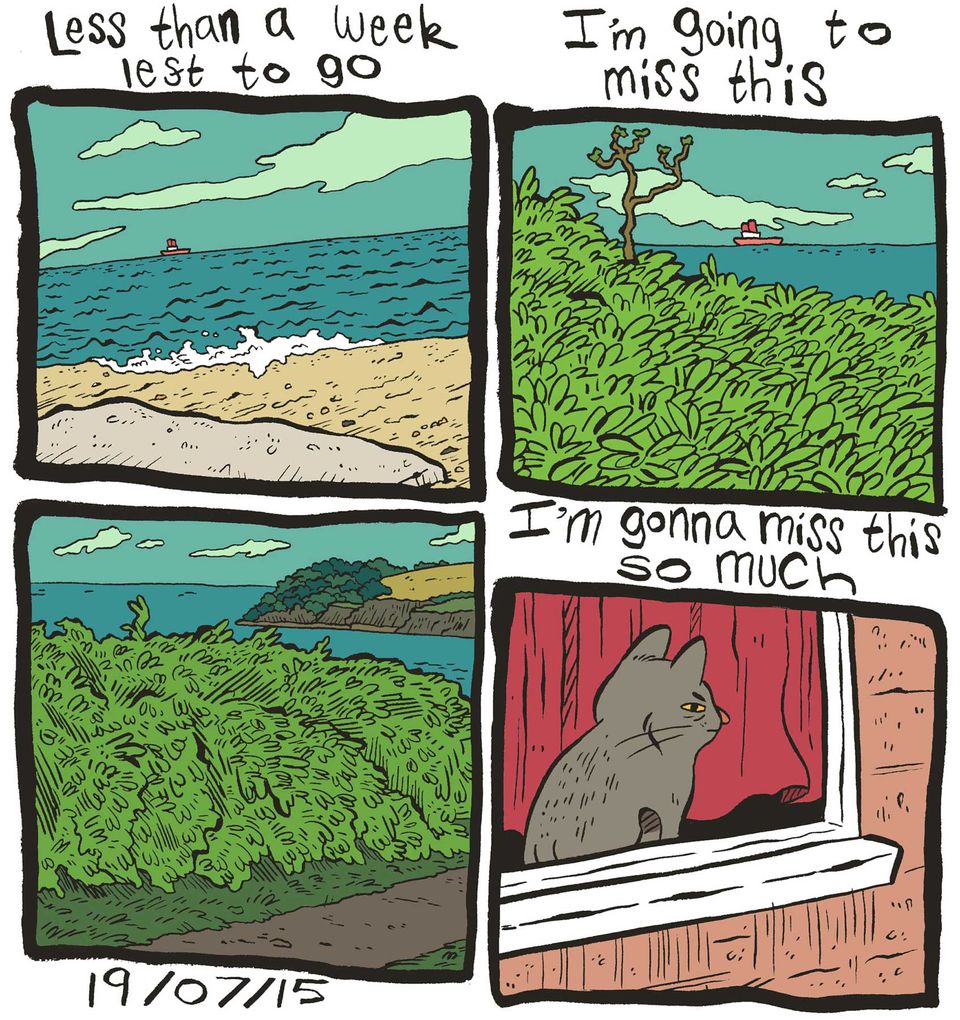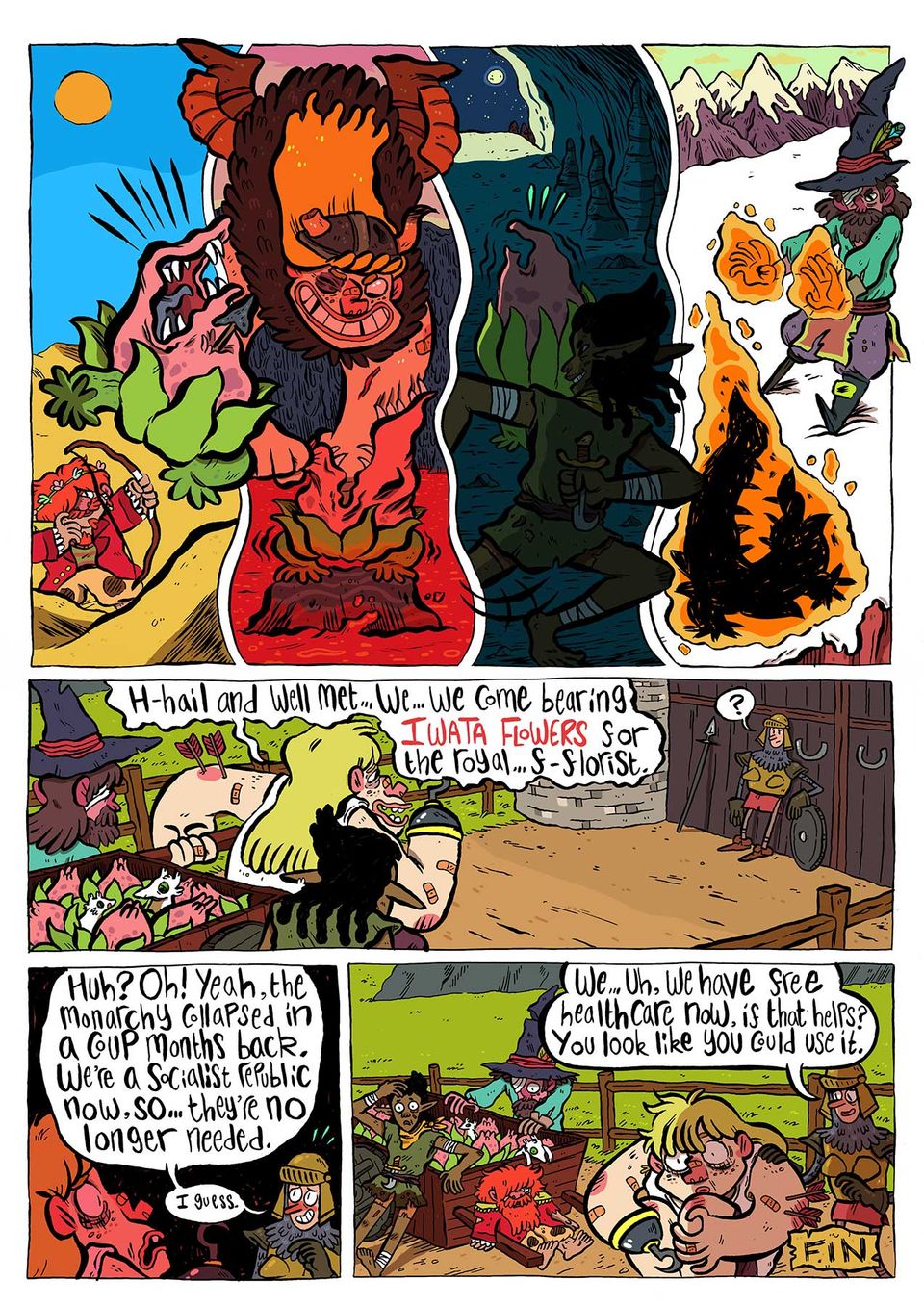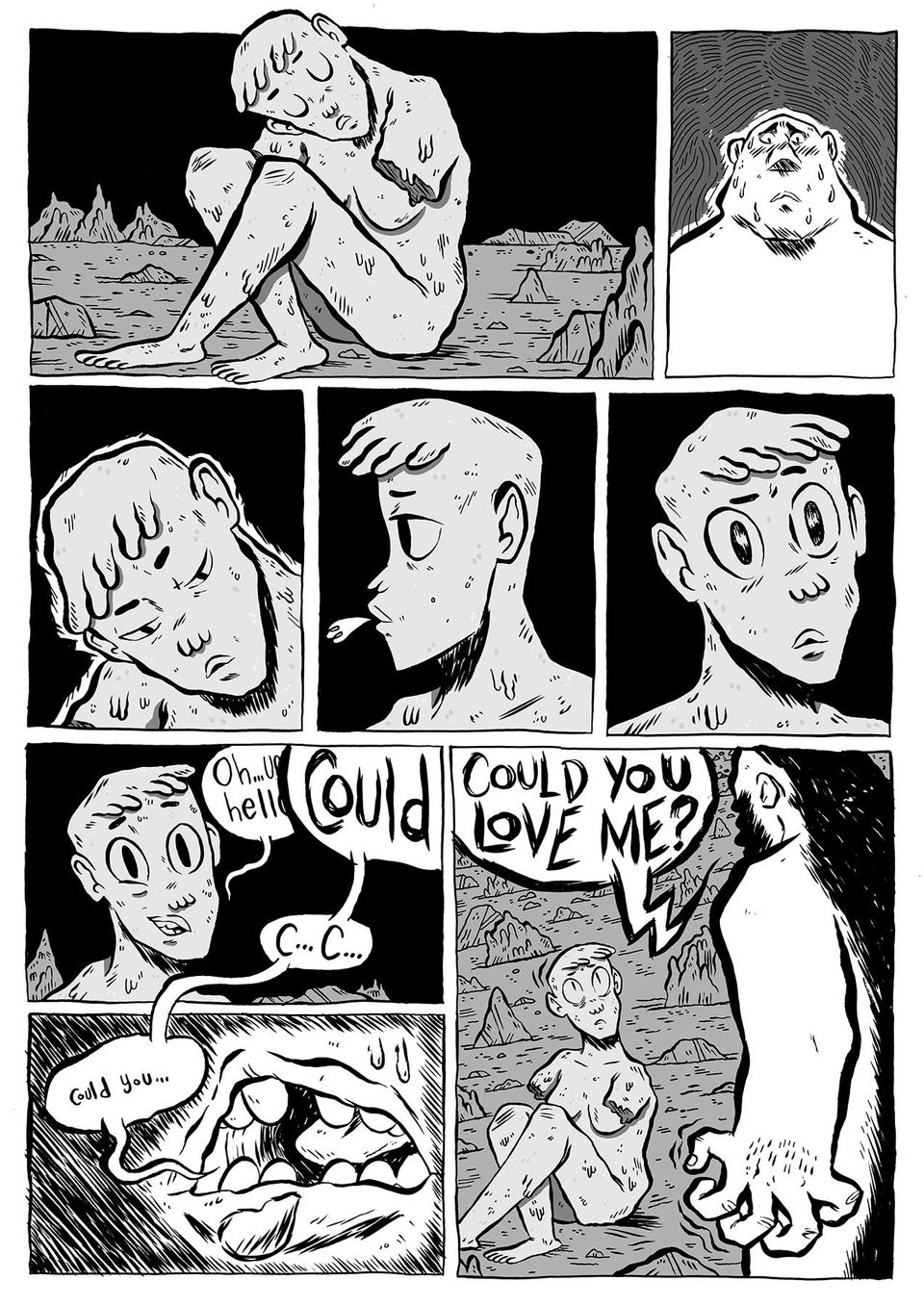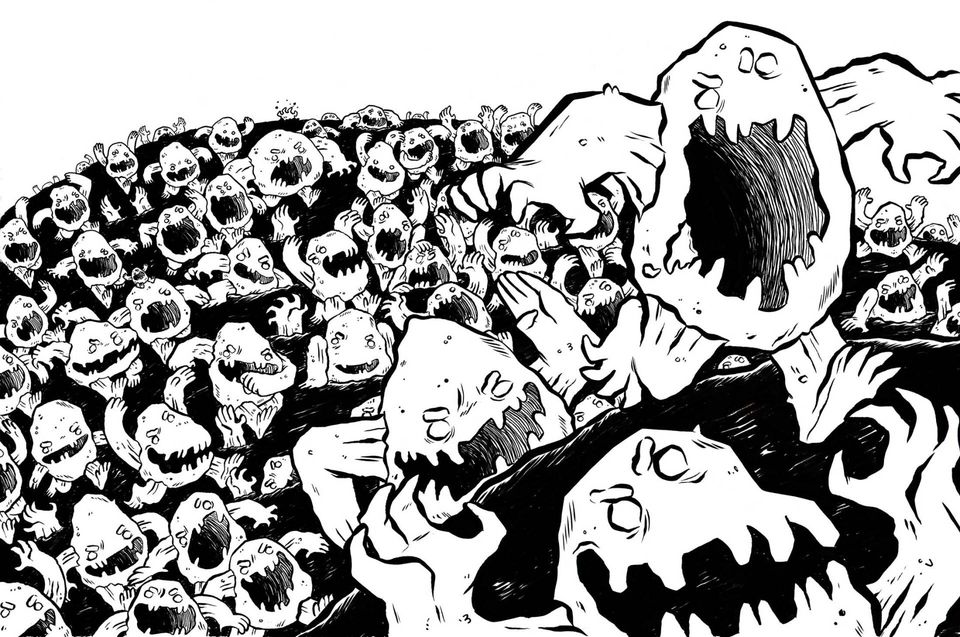Artist Spotlight: Lucie Ebrey
September 5, 2019
Everyone’s work is deeply idiosyncratic: in our regular Spotlight segment we explore artists’ experiences and inspiration to understand what defines and inspires their unique styles.
Can you give us a brief background on yourself?
It's a really stock answer, but like most people working in the arts, it was really just a case of never stopping drawing. I devoured so many cartoons and comics as a kid, and was still really interested in them through my teen years. I knew it was something I wanted to pursue, but I was so weighed down with GCSE's and A Levels that it wasn't until I'd finally finished my foundation course that I was actively drawing cartoons regularly again. I started drawing a comic diary every day. I went to Falmouth University, after literally years of setting my sights on it, and graduated in 2015.
Now I'm working freelance and juggling as much as I can without collapsing in a pile of bristol board and tears! It's really scary and I'm always having to learn something new, but I'm already surprised with what I've ended up creating.

What kind of influence does your location have on your career?
Currently, I'm working from home in Birmingham. I've lived in this city my whole life and as much as I am fond of it, I admit I'm frustrated with the lack of any real art scene that I'd want to be a part of. It's all very experimental fine art and there's no real opportunities that I could apply my skills to here either (something that became depressingly clear in the post-uni-CV-emailing flurry). I'm lucky that my career allows me to accept work from clients who aren't even in the same country as I am! As long as I have working internet and a decent scanner, then I'm pretty much good to go. I'd love to move to somewhere with a more thriving art scene sometime in the future, but I think every 20-something ex-art student is looking for that haha. I feel like my location is pretty incidental when it comes to how it directly influences my work, although it probably comes out strongest in my comic diaries. Especially towards the end of my stay down in Cornwall when I had strips dedicated to the coastline and sentimental memories of 3 life-changing years.
What is your greatest source of inspiration?
I often find my greatest inspiration comes from the mundane everyday of human behaviours, and those little moments that might mean something but probably mean nothing. It comes with the territory when you have to draw a comic strip about that sort of thing every day. On the other hand, I love cooking up bombastic and ridiculous tales from the more fantastical ideas in my head that come from watching a lot of movies or playing too many video games. I try to avoid being boxed into any specific genre or type of work, especially this early on in my career, and tend to just lean into whatever feels right in the moment. In terms of other artists who have influenced me, I have so many in so many different mediums that it's hard to narrow the list down to only a few core people, but a couple of names do stand out to me. The most obvious one, I suppose, would be James Kochalka - a cartoonist from Vermont. For 14 years he drew a daily diary comic called American Elf, and after coming across it when I was around 18, I instantly wanted to see if I could do it too! I began my own in May 2012 and I'm still going to this day. I owe Kochalka a lot. In terms of other creators whose work I know for sure changed my view and approach of cartooning, the list includes folks like Matt Groening, Art Spiegelman, Craig Thompson, Marjane Satrapi, Chuck Jones, Hayao Miyazaki, Luke Pearson, Jack Teagle, Will Eisner, and honestly too many to list here without it dragging on and on.
Could you pick one piece of art that has made a lasting influence on you, and if so why?
Again, there's so many that struck a chord with me for some specific reason or another that elevating one to becoming the most significant is very hard. But the one that's jumping out to me right now would be Maus by Art Spiegelman.
I first encountered it when I was 13 at my local library, and it was the first ever graphic novel I ever read that was about more than superheroes. To be honest, I found it incredibly shocking at that age, since it's about Spiegelman's father struggling as a Polish Jew during WWII and certainly doesn't shy away from the most harrowing aspects of the Holocaust. Even though it was profoundly upsetting to me at the time, I was also incredibly excited by it. I was floored at how not only was it using comics as a way of telling a mature story, but it was also using animals in such a symbolic way. The idea of making the Jews mice, the Germans cats, and the Poles pigs seems almost reductive at a first glance, but is actually a brilliant way of illustrating the lack of humanity shown within the pages. I'd never encountered a piece of media that was so layered and well executed at that point, and I still hold it in high regard to this day. It was the gateway graphic novel that nudged me towards where I am today.
What skills or techniques do you find most useful in your line of work? Do you use primarily traditional or digital methods to create your artwork?
The most useful skill is simply to be efficient and work to a schedule. The second I slack off and don't adhere to it is when things become instantly more stressful, and I'm getting better at it as time goes on. It's especially important with regards to keeping up with my daily comic diaries, as a single day where I decide I can't be bothered to ink the strip can cause a serious pileup later on down the road. As for how I approach my work, I'm a mix of both traditional and digital. I ink almost exclusively with a brush pen of some kind on to paper, which I then scan in and colour digitally in Photoshop. I love the tactile sensation of dragging a brush across paper and the infinite possibilities when colouring in a digital space, so it's the ideal set-up for me! I will also dabble in water colours and pottery ever so often to have a rest, and also to try something new. It's a good way to get the artistic juices flowing if ink or Photoshop is getting stale. Plus I end up with stuff that I can give to friends or put a new plant in, and that's just great.
How can people who are interested in discovering more of your work find it?
My website is at www.lucieebrey.com,
or you can follow my Tumblr where my almost-5 year long daily diary comic gets added to regularly at www.muggyebes.tumblr.com.
Then there's my Twitter @LucieEbrey
and my Instagram @lucie_ebrey.
Scriba is a revolutionary digital stylus that is ergonomically designed to comfortably fit your hand and uses unique Squeeze-Motion technology. Order here.
Articles

In the period since COVID forced many of us back home and out of the office, remote work has become the new norm for many. The flexibility of working from home, especially for those with small children, is very compelling, but making a productive workspace is more than setting up a desk in the spare room. More people are seeking to create functional and comfortable workspaces in their homes, however, it can be difficult to strike the right balance between a professional office space and a cosy home environment. Here are some tips for designing a home workspace that meets both of these needs: Dedicate a specific area for work Designating a specific area for work is essential for separating work from leisure time. This could be a separate room or just a corner of a room. It is important to make sure that the workspace is free from distractions and clutter, as this will help you stay focused and productive. Choose the right furniture Ergonomic furniture is key to a comfortable and productive workspace. Invest in a comfortable chair, a desk that is the right height, and a good-quality mouse and keyboard. If you are prone to back pain, consider a standing desk. Add personal touches Just because your workspace should be functional, doesn’t mean it can’t be personal. Add photos, plants, and other personal items to make the space feel like your own. This will help create a sense of comfort and make you feel at home in your workspace. Good lighting Good lighting is essential for a comfortable workspace. If possible, place your desk near a window for natural light. If not, invest in a high-quality desk lamp to provide bright, even light. Keep it organised An organised workspace will help you stay productive and focused. Use desk organisers, filing cabinets, and other tools to keep your work area free from clutter. A clean and organised workspace will also help you start each day with a clear mind. Consider your work style Think about the type of work you do and how you like to work. If you prefer a minimalist workspace, opt for a simple desk and a few basic supplies. If you need space for multiple screens and other technology, make sure you have enough room to work comfortably. Take breaks It’s important to take breaks throughout the day to avoid burnout. Step away from your desk, go for a walk, or do some stretching exercises to clear your mind and recharge.












